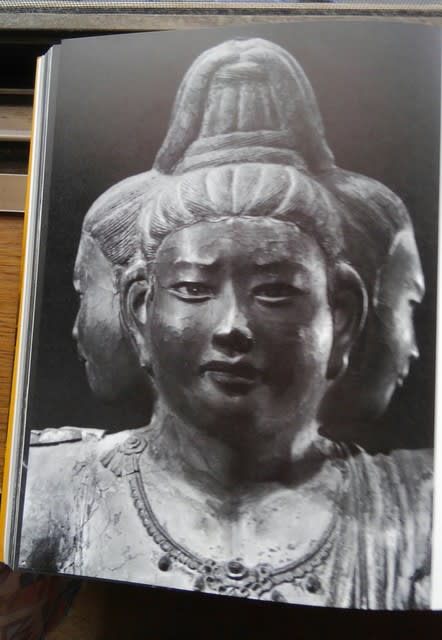この本は素晴らしい本なのでどこかの出版社で英語版を出版してくださらないかと願っています。

私のお勧めの本は紀野一義先生のそれぞれの佛様の名解説と名写真家の入江泰吉先生による佛様の写真の迫力ある美しさを伝えている写真集です。
『わたしの愛する仏たち』 紀野一義著、入江泰吉:写真

私が40年近く教えを受けた東京の紀野一義先生のお話の中で特に印象の深かったのは奈良・興福寺の阿修羅像の事です。童顔でハンサムな3つの顔に6本の手(三面六臂)の特異な造形で大変に人気があります。
紀野先生は2013年12月(享年91)にお亡くなりに成りました。
近年は外国人の仏像に対する興味が深くなったので英語で阿修羅像の事を説明したいと思い、かなりさび付いている私の英語ですが、興福寺・阿修羅の意味を紀野先生からお聞きしたお話を英語で書いてみました。ご笑覧あれ・・・
日本語の要約を書きました。
阿修羅像の3つのポーズは一日の感情の変化と、一生の魂の変遷を表わしています。
①一日の感情の変化・・・大望→→ためらい→→感謝
②人の一生の魂の変遷・・・少年期(野心)→→青年期(懐疑)→→大人(うし)・・・諦念
人生での幾つもの失敗を経験として価値あるものへと私達は変換することが出来ると気付いた。言い換えれば、失敗も成功も共に人間として成長の糧として利用できる。人生の試練を乗り越える事によって、大人(うし)として開花する。私達は自分のすべての経験を認め、感謝しょう。また、時として孤独は意志の強さを育成する。
【Total Acceptance】 「わたしの愛する仏たち」・・・Buddhist Images in Kyoto and Nara
written by prof.Kazuyosi Kino who was my Buddhism master for nearly 40 years.
P52・・・The mature person(男の悲しみ)
Ashura,Kofukuhi Temple in Nara(興福寺・阿修羅像)
This statue has three faces with three pair of arms.
Each pose shows man`s daily feelings and also man`s life.
(Variation of his daily feelings)
Pose1・・・the right face with the arms held up shows his ambitions.
Pose2・・・the left face with the arms hung down shows his hesitation and restlessness.
Pose3・・・the middle face in prayer shows his spiritual awakening.
(Each stage in man`s life)
In pose 1・・・ Ashura is shown as a boy,(野心)
In pose 2・・・Ashura is shown as a person. (懐疑)
He has lost his confidence.
In pose3・・・Ashura is shown as a man.(諦念)
He realizes that he can change his failures into valuable learning experiences. In other words ,
both good and bad experiences make a man of a person.
By overcoming the trials of life, a person blossoms into a man.
He accepts and appreciates all his experiences.
In addition, something isolation cultivates the strength of will.
Written by RIKO




























